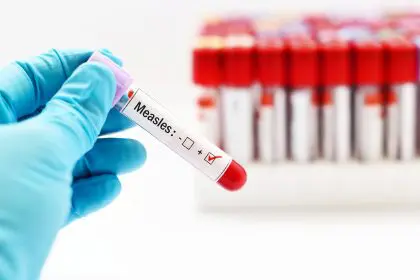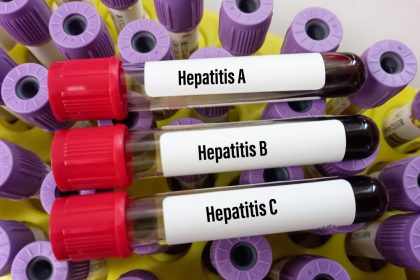Tuberculosis (TB) remains one of humanity’s oldest and most persistent health challenges. Despite significant medical advances, this infectious disease continues to affect millions globally, with particularly devastating impacts in developing regions. Understanding TB’s causes, recognizing its symptoms, knowing treatment options, and implementing prevention strategies are crucial steps in controlling this ancient yet evolving threat.
What causes tuberculosis?
At its core, tuberculosis is an infectious disease caused by Mycobacterium tuberculosis, a rod-shaped bacterium with a unique waxy cell wall that contributes to its resilience and pathogenicity. This bacterial structure explains why TB can withstand harsh environmental conditions and resist many standard antibiotics.
The primary transmission route occurs through airborne particles. When someone with active TB coughs, sneezes, speaks, or even sings, they release microscopic droplets containing the bacteria. These droplets can remain suspended in the air for hours, particularly in poorly ventilated spaces. Individuals breathing this contaminated air may then become infected if the bacteria reach their lungs.
However, not everyone exposed to TB bacteria develops the disease. The human immune system often creates a barrier around the bacteria, forming what medical professionals call a granuloma. This immune response effectively walls off the infection, preventing symptoms and disease progression. This state is known as latent TB infection.
Several factors influence whether exposure leads to infection and whether infection progresses to active disease:
Proximity and duration of contact with an infected person Concentration of bacteria in the air Immune status of the exposed individual Nutritional health of the exposed person Presence of other medical conditions, particularly HIV
The distinction between latent TB infection and active TB disease remains crucial. In latent TB, the bacteria remain dormant, causing no symptoms and remaining non-contagious. However, approximately 5-10% of those with latent infections eventually develop active TB disease when their immune system can no longer contain the bacteria.
Risk factors for progression from latent to active TB include:
Recent infection (within the past two years) HIV infection and other immunocompromising conditions Substance abuse, particularly injection drugs Certain medical treatments that suppress immunity Young age (under 5) or advanced age (over 65) Diabetes mellitus End-stage renal disease Certain cancers, particularly head and neck cancers Malnutrition and low body weight
The bacterium’s remarkable adaptability has led to the emergence of multidrug-resistant TB (MDR-TB) and extensively drug-resistant TB (XDR-TB) strains. These resistant forms develop when patients receive inadequate treatment, stop treatment prematurely, or when healthcare providers prescribe inappropriate medication regimens.
Recognizing the signs and symptoms
Tuberculosis primarily affects the lungs (pulmonary TB), but can invade other body systems (extrapulmonary TB), including the kidneys, spine, brain, and lymph nodes. The symptoms vary depending on which organs are affected.
Pulmonary TB typically produces symptoms that develop gradually over weeks or months:
Persistent cough lasting three weeks or longer, often producing blood-tinged sputum Chest pain, particularly while breathing or coughing Unintentional weight loss despite normal or increased appetite Fatigue and weakness that interferes with daily activities Fever that typically rises in the evening, often accompanied by night sweats Loss of appetite leading to nutritional deficiencies Chills and cold sweats, particularly at night
These symptoms may initially be mild, allowing individuals to dismiss them as a common cold or bronchitis. This delayed recognition contributes to ongoing transmission before diagnosis.
Extrapulmonary TB presents with symptoms specific to the affected organ system:
TB meningitis (brain and spinal cord): Headaches, confusion, neck stiffness TB lymphadenitis (lymph nodes): Swollen, often painless lymph nodes, usually in the neck Skeletal TB: Back pain, joint destruction, particularly in the spine (Pott’s disease) Genitourinary TB: Painful urination, blood in urine, pelvic pain Miliary TB (disseminated throughout body): Widespread symptoms, often severe
Children with TB often present differently than adults, showing:
Poor weight gain or failure to thrive Reduced playfulness and activity Persistent fever without clear cause Enlarged lymph nodes, particularly in the neck
Elderly patients may show atypical presentations, sometimes with minimal respiratory symptoms but pronounced confusion, decreased appetite, or generalized weakness, making diagnosis particularly challenging.
Diagnosing TB involves several approaches:
Tuberculin skin test (TST) or Mantoux test, which measures immune response to TB proteins Interferon-gamma release assays (IGRAs), blood tests that detect TB infection Chest X-rays to identify characteristic lung changes Sputum microscopy and culture to detect and grow the bacteria Nucleic acid amplification tests (NAATs) for rapid identification of the bacteria Tissue biopsies for extrapulmonary TB
Early detection remains critical for effective treatment and preventing transmission. Individuals with persistent coughs lasting more than three weeks, especially when accompanied by other symptoms, should seek medical evaluation.
Modern treatment approaches
The treatment landscape for tuberculosis has evolved significantly since the discovery of streptomycin in 1943, the first antibiotic effective against TB. Today’s treatment approaches balance effectiveness, duration, side effects, and the growing challenge of drug resistance.
Standard treatment for drug-susceptible TB follows a two-phase approach:
Initial intensive phase (2 months): Combination of four first-line drugs—isoniazid, rifampin, ethambutol, and pyrazinamide Continuation phase (4 months): Usually isoniazid and rifampin
This lengthy treatment duration creates adherence challenges. To address this, Directly Observed Therapy (DOT) programs have become standard practice, where healthcare workers observe patients taking their medications to ensure compliance.
For drug-resistant forms, treatment becomes more complex:
MDR-TB requires 9-20 months of treatment with second-line drugs, which often cause more severe side effects XDR-TB demands even more complex regimens, sometimes lasting two years or more Newer medications like bedaquiline, delamanid, and pretomanid offer hope for resistant cases
Common side effects of TB medications include:
Liver inflammation and potential damage Peripheral neuropathy (nerve damage) Vision changes, particularly with ethambutol Gastrointestinal disturbances Joint pain, especially with pyrazinamide
Beyond medications, supportive care plays a vital role in TB treatment:
Nutritional support to counter weight loss and support immune function Management of respiratory symptoms Psychological support for the lengthy treatment journey Addressing social factors that might impede treatment completion
Recent research has introduced shorter treatment regimens for some patients, potentially reducing the standard six-month regimen to four months for certain forms of drug-susceptible pulmonary TB. These shorter regimens may improve completion rates while maintaining effectiveness.
Surgical interventions occasionally become necessary, particularly for drug-resistant cases or when TB creates structural damage to organs. Procedures may include:
Removal of severely damaged lung tissue Drainage of TB abscesses Stabilization of spine in cases of vertebral TB
The treatment success rate for drug-susceptible TB exceeds 85% in most settings with proper adherence. However, MDR-TB and XDR-TB success rates remain significantly lower, highlighting the urgent need for new treatment approaches and improved patient support systems.
Prevention strategies: Individual to global
Preventing tuberculosis requires a multi-layered approach spanning individual measures to global public health initiatives. These strategies focus on breaking the transmission chain, identifying and treating latent infections, and creating environments resistant to TB spread.
At the individual level, several measures reduce TB risk:
Prompt diagnosis and treatment of active cases to prevent transmission Avoiding close, prolonged contact with known TB patients until they become non-infectious Maintaining good overall health through proper nutrition and management of conditions that weaken immunity Seeking medical evaluation for persistent coughs or unexplained weight loss Completing full treatment courses if diagnosed with TB
For healthcare settings, infection control measures include:
Early identification and isolation of suspected TB cases Proper ventilation systems with negative pressure rooms for TB patients Use of ultraviolet germicidal irradiation in high-risk areas Personal protective equipment for healthcare workers Regular screening of healthcare workers for TB infection
Bacillus Calmette-Guérin (BCG) vaccination plays a critical role in TB prevention in many countries. This vaccine:
Provides 80% protection against severe forms of TB in children, including TB meningitis Offers variable protection against pulmonary TB in adults Remains widely administered in countries with high TB prevalence Is not routinely given in countries with low TB rates due to its limited effectiveness against pulmonary TB and potential interference with TB testing
For contacts of TB patients and others at high risk, treating latent TB infection prevents progression to active disease. Treatment options include:
Isoniazid for 6-9 months Rifampin for 4 months Isoniazid plus rifapentine for 3 months
Public health systems focus on systematic approaches:
Active case finding in high-risk populations Contact tracing to identify exposed individuals Surveillance systems to monitor TB trends and outbreaks Integration of TB and HIV services, given their synergistic relationship
Environmental factors significantly influence TB transmission. Addressing these includes:
Improved housing conditions to reduce overcrowding Better ventilation in communal spaces Access to natural light, which contains UV radiation that kills TB bacteria Reduction of indoor air pollution from cooking fires and other sources
Socioeconomic factors play a profound role in TB prevalence. Addressing these requires:
Poverty reduction initiatives Improved access to healthcare Nutritional support programs Educational campaigns about TB symptoms and transmission
The global fight against TB requires coordinated international efforts:
Funding for TB programs in high-burden countries Research for new vaccines, diagnostics, and treatments Cross-border TB control initiatives Support for countries with limited healthcare infrastructure
Despite these multifaceted prevention strategies, TB elimination faces significant challenges:
The reservoir of latent TB infection in approximately one-quarter of the global population Increasing drug resistance The HIV epidemic, which dramatically increases TB susceptibility Socioeconomic inequalities that facilitate TB transmission Disruptions to healthcare systems during crises like the COVID-19 pandemic
Tuberculosis sits at the intersection of medical science, public health policy, and social determinants of health. Its persistence despite available prevention and treatment options highlights the complex interplay of biological, social, and economic factors that maintain its global presence.
As healthcare systems continue evolving, the approach to TB must similarly advance—incorporating new technologies, addressing persistent inequalities, and strengthening healthcare infrastructure globally. Only through comprehensive efforts addressing both the pathogen and the conditions that enable its spread can we make meaningful progress against this ancient disease.
Understanding tuberculosis—its causes, symptoms, treatment, and prevention—empowers individuals and communities to participate actively in TB control efforts. With continued attention and resources, TB elimination remains a challenging but achievable global health goal.


















